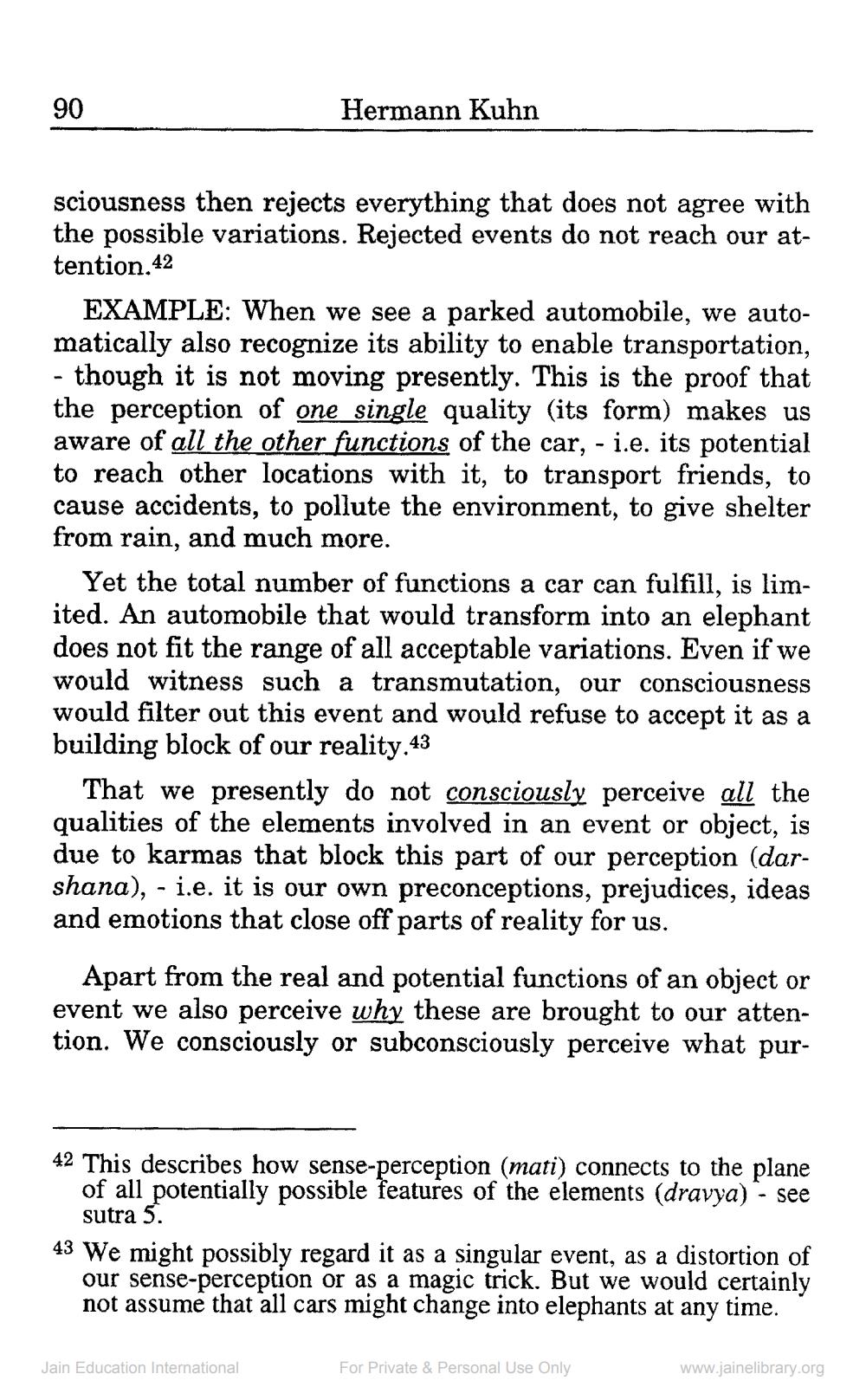________________
90
Hermann Kuhn
sciousness then rejects everything that does not agree with the possible variations. Rejected events do not reach our attention.42
EXAMPLE: When we see a parked automobile, we automatically also recognize its ability to enable transportation, though it is not moving presently. This is the proof that the perception of one single quality (its form) makes us aware of all the other functions of the car, - i.e. its potential to reach other locations with it, to transport friends, to cause accidents, to pollute the environment, to give shelter from rain, and much more.
Yet the total number of functions a car can fulfill, is limited. An automobile that would transform into an elephant does not fit the range of all acceptable variations. Even if we would witness such a transmutation, our consciousness would filter out this event and would refuse to accept it as a building block of our reality.43
That we presently do not consciously perceive all the qualities of the elements involved in an event or object, is due to karmas that block this part of our perception (darshana), - i.e. it is our own preconceptions, prejudices, ideas and emotions that close off parts of reality for us.
Apart from the real and potential functions of an object or event we also perceive why these are brought to our attention. We consciously or subconsciously perceive what pur
42 This describes how sense-perception (mati) connects to the plane of all potentially possible features of the elements (dravya) - see
sutra 5.
43 We might possibly regard it as a singular event, as a distortion of our sense-perception or as a magic trick. But we would certainly not assume that all cars might change into elephants at any time.
Jain Education International
For Private & Personal Use Only
www.jainelibrary.org




